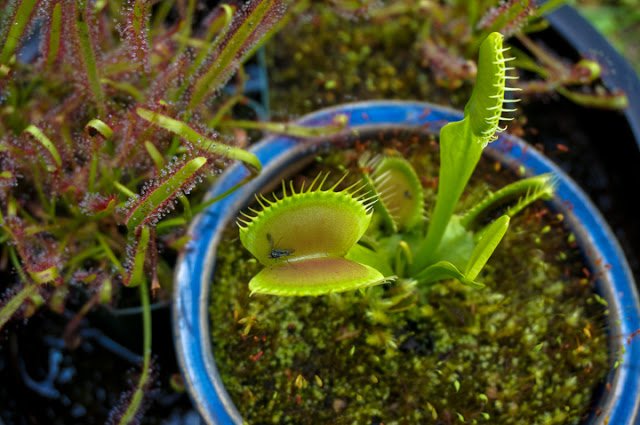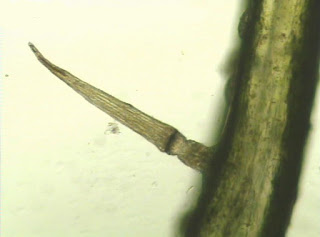Venus Flytrap after Munching a Mosquito

A venus flytrap (Dionaea muscipula) after munching a mosquito
This is a photo of one of my Venus Flytraps.
The venus flytrap is perhaps the most well known carnivorous plant. Contrary to what many people believe, carnivorous plants do not "eat" insects for energy (they get plenty of it from the sun). They eat insects for their nitrogen. In fact carnivorous plants, like the venus flytrap, depend on insect sources of nitrogen so much so that most of them completely lack the enzyme (nitrate reductase) necessary to use soil sources of nitrogen. Basically the insects serve as plant fertilizer. Most carnivorous plants live in boggy areas, which typically have low levels of nitrogen. Evolutionarily, you can see why there would be selection pressure for the plants to gradually evolve ways to acquire nitrogen from other sources.
The mechanism behind the closure of the trap is absolutely fascinating. If you look really closely in the above picture you can see hairs that lie within the trap. Here a picture of a closeup of one of the hairs:

Photographer: Martin Brunner, Source, Wikimedia Commons
Way back in 1961, Joseph R. Di Palma, Robert Mohl, and William Best Jr. recorded the action potential (http://www.sciencemag.org/content/133/3456/878.short) of the venus flytrap. That means that they were able to record the electrical signal that gets sent when a bug hits one of these hairs. The cool thing is that in order for the trap to shut, the insect needs to hit the hairs twice in succession before the trap will close. Since closing the trap costs energy, the plant wants to avoid false positives such a being hit by a raindrop.
Sources:
http://www.sciencemag.org/content/133/3456/878.short
Note: This was originally posted on my site http://www.sciphotos.com. I'm new to steem it and still learning my way around, but I plan on posting more exclusive and original content soon.